Conf Buddy
Last month I and a small team entered a Salesforce.com hackathon.
Building on a business need, we decided to develop a multi-tenant conferencing application, which covered registration, session management, breakout areas, virtual attendance, feedback, social collaboration and speaker management. As a special feature, we also developed a people networking capability, which identifies and groups individuals with similar skills and expertise.
The hackathon took place across three sessions, covering everything from ideation to implementation.
The application architecture utilized a model-view-controller design pattern, leveraging the native capabilities of Force.com to drive the data model. The application logic was written in Apex, with the front-end being built with Visualforce, Less, Bootstrap and jQuery (including plugins).
Myself and a colleague shared the developed tasks, while other members of the team prepared the pitch, marketing material, documentation and came up with the application name “Conf Buddy”.
The video below shows Conf Buddy in action:
I’ve also included a few screenshots, highlighting the responsive design.
Home Page - Providing a summary of conference.
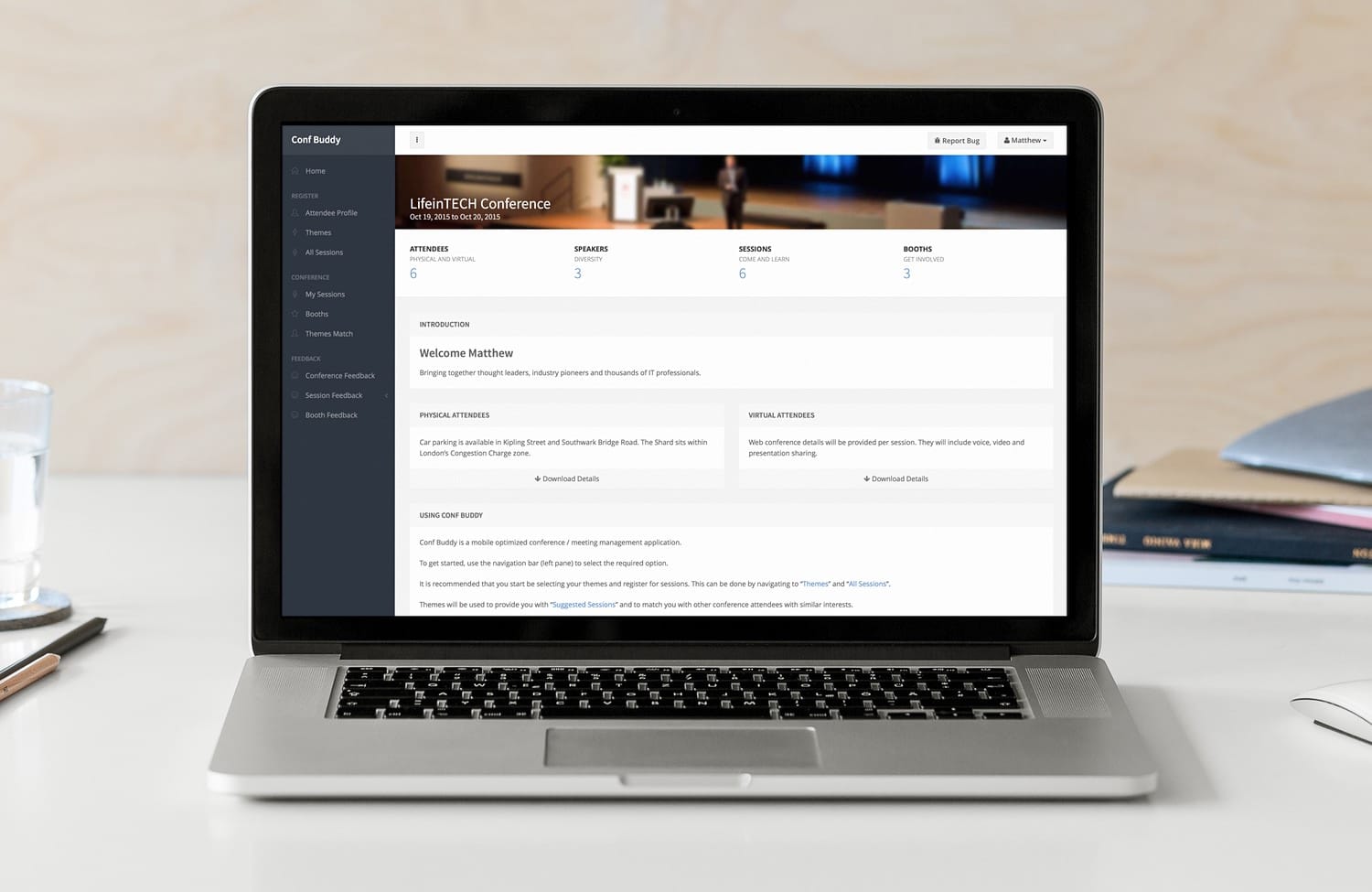
Themes - Select personal themes and expertise.
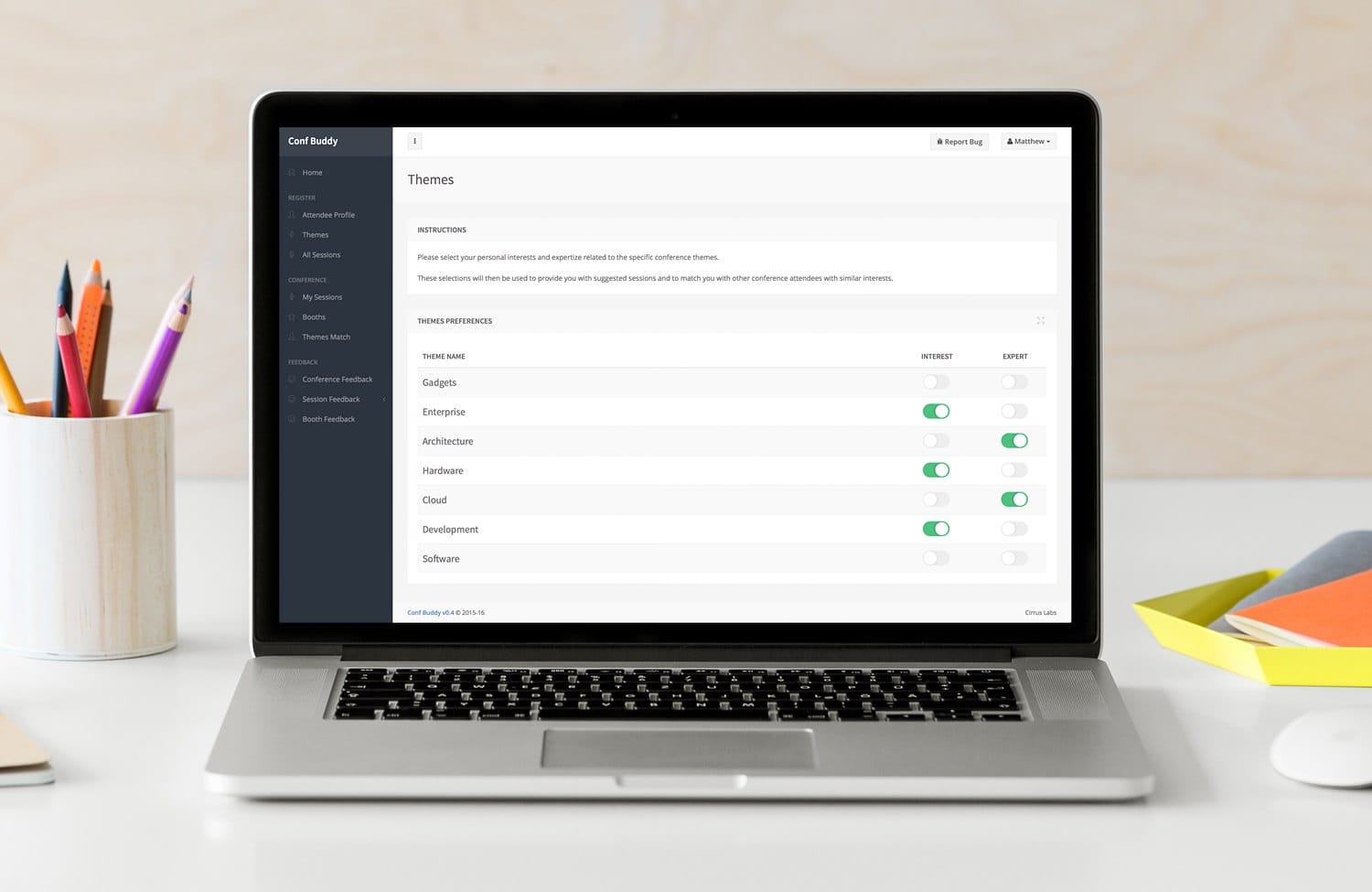
Sessions - A list of sessions, including suggested sessions based on your selected themes.
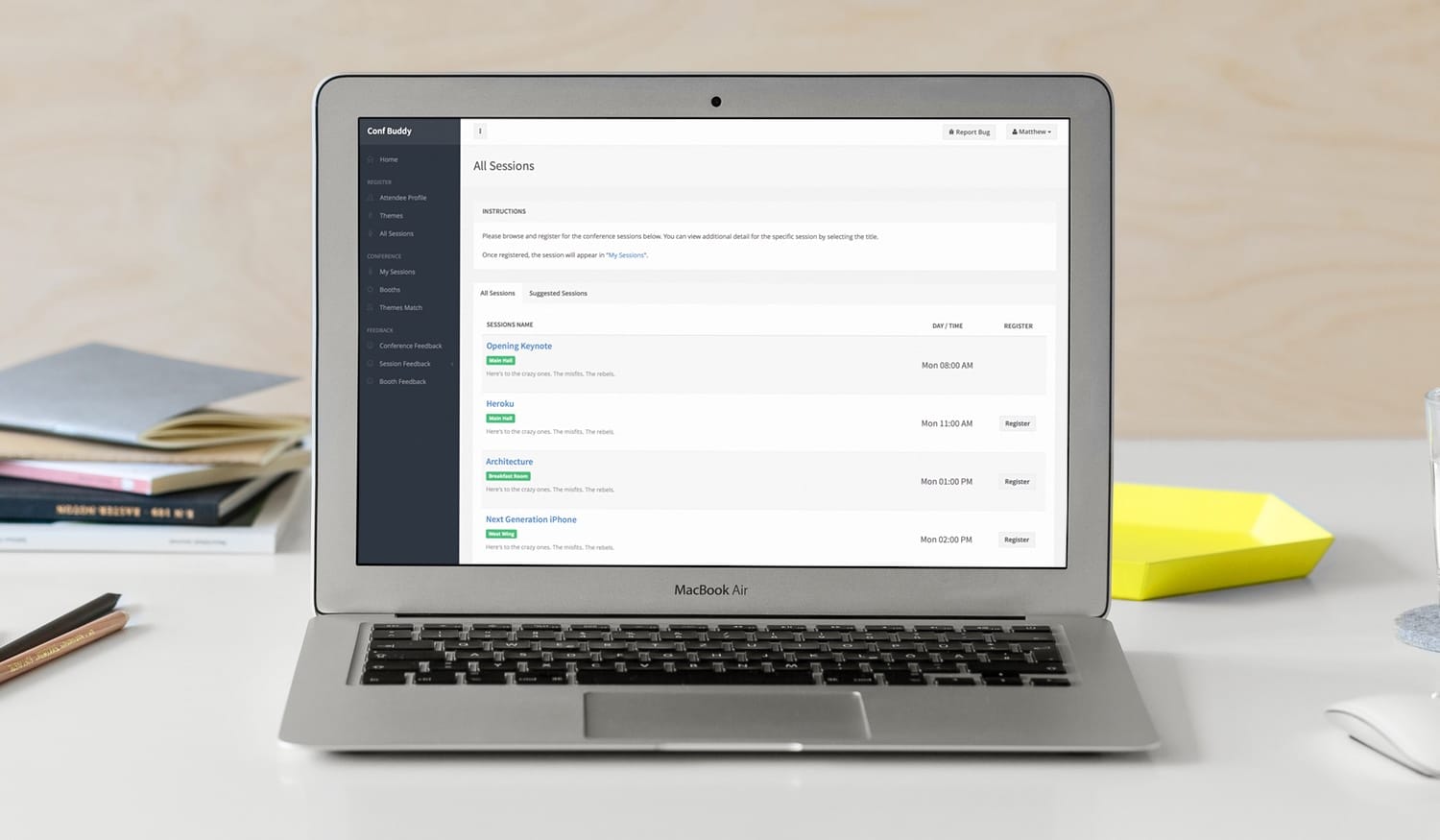
Session Details - Session information, including virtual details and social collaboration.
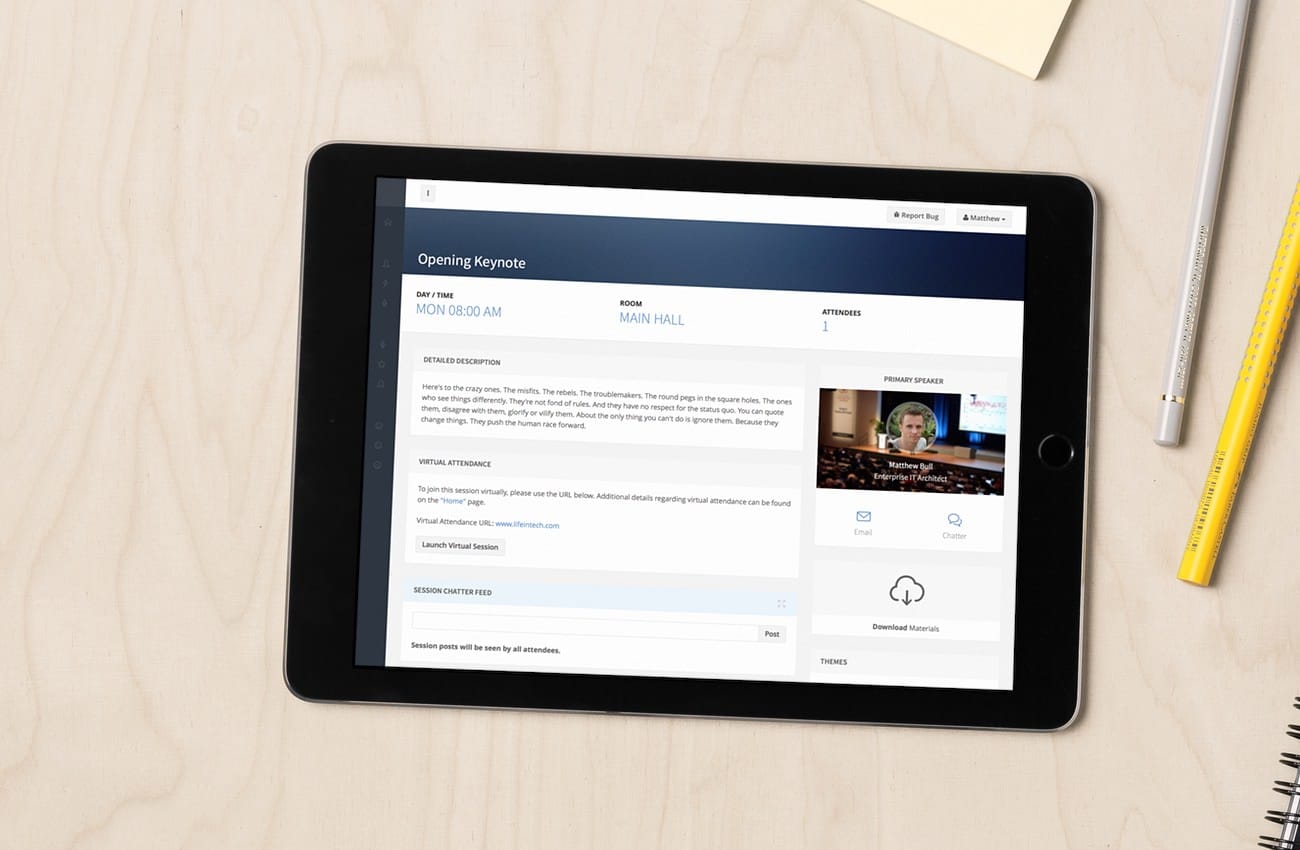
Themes Match - Individuals with similar skills and expertise.
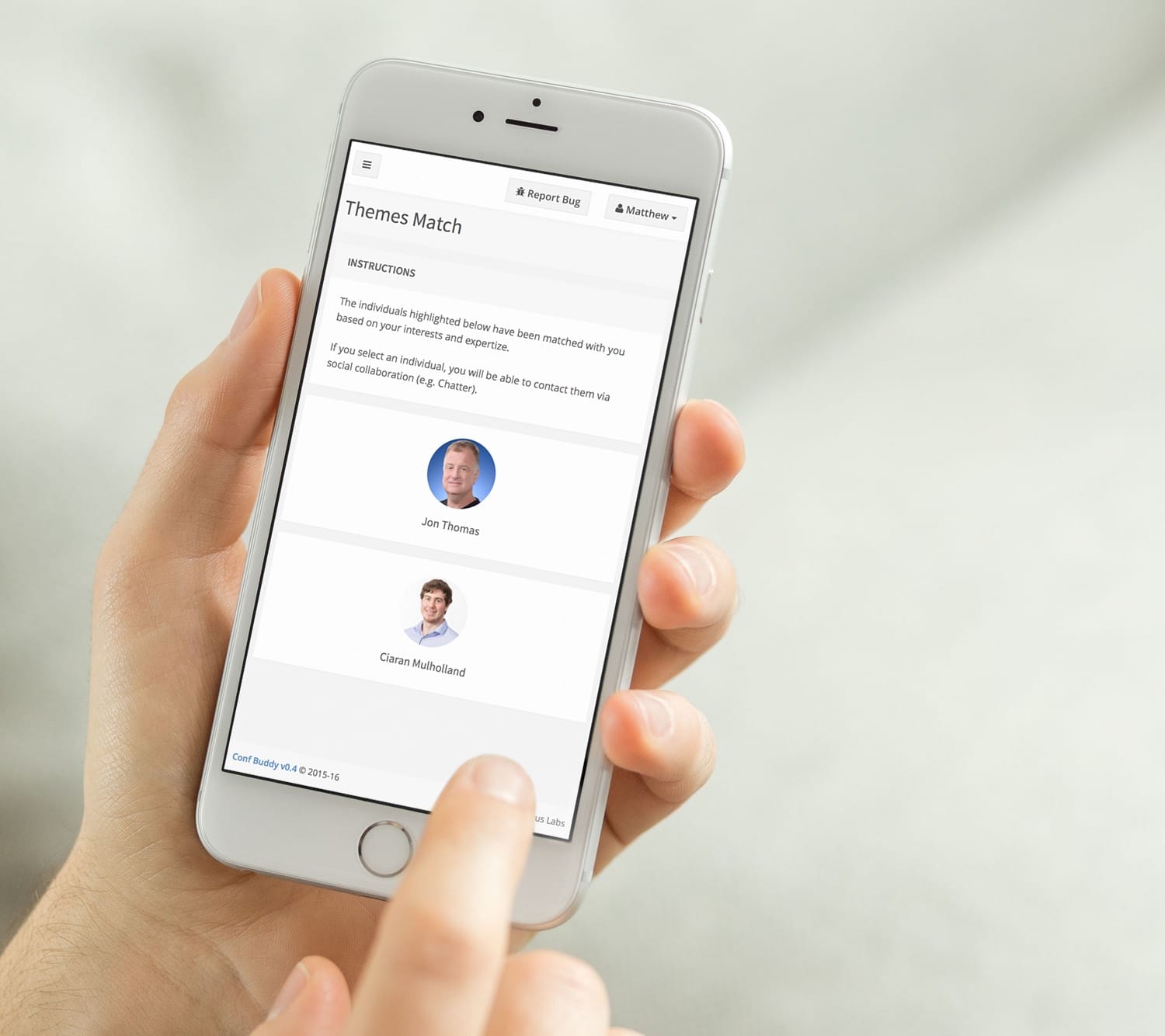
Conf Buddy was first used in November 2015, at an IT Conference. This was a two-day event, where 1641 users (physical and virtual) registered via Conf Buddy for the available 84 sessions. Over the two days the application was accessed 53,370 times, from seven countries, across desktops (62%), smartphones (34%) and tablets (4%).
Thanks to the success of the first conference, positive user feedback and the multi-tenant nature of the application, Conf Buddy was positioned as an enterprise application for conference management.
It’s also worth highlighting how Force.com helped enabled this use case. Thanks to the declarative capabilities of the platform we were able to have a fully working data model, with process flows and multi-tenant security operational within just a few hours. This enabled us to immediately on-board some users to start testing key parts of the application, providing near real-time feedback as the view was being developed.
Although you could obviously build this application using any number of different languages and frameworks, I’m not convinced you could have delivered a secure, reliable, scalable application that was ready for production within the same timeframe.